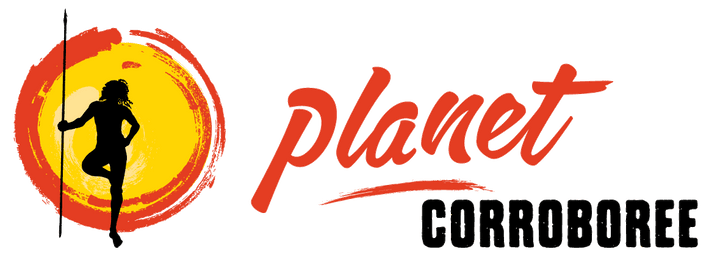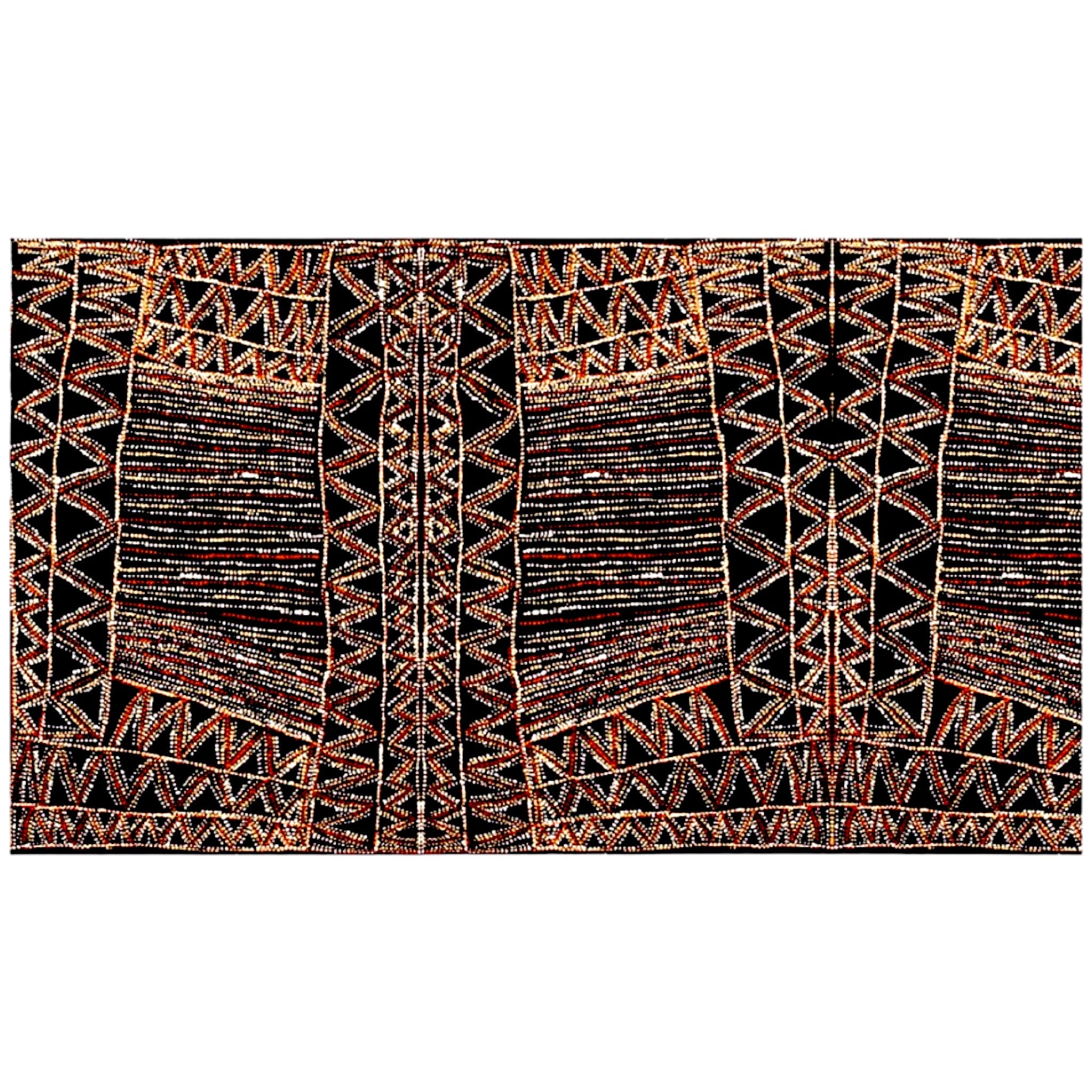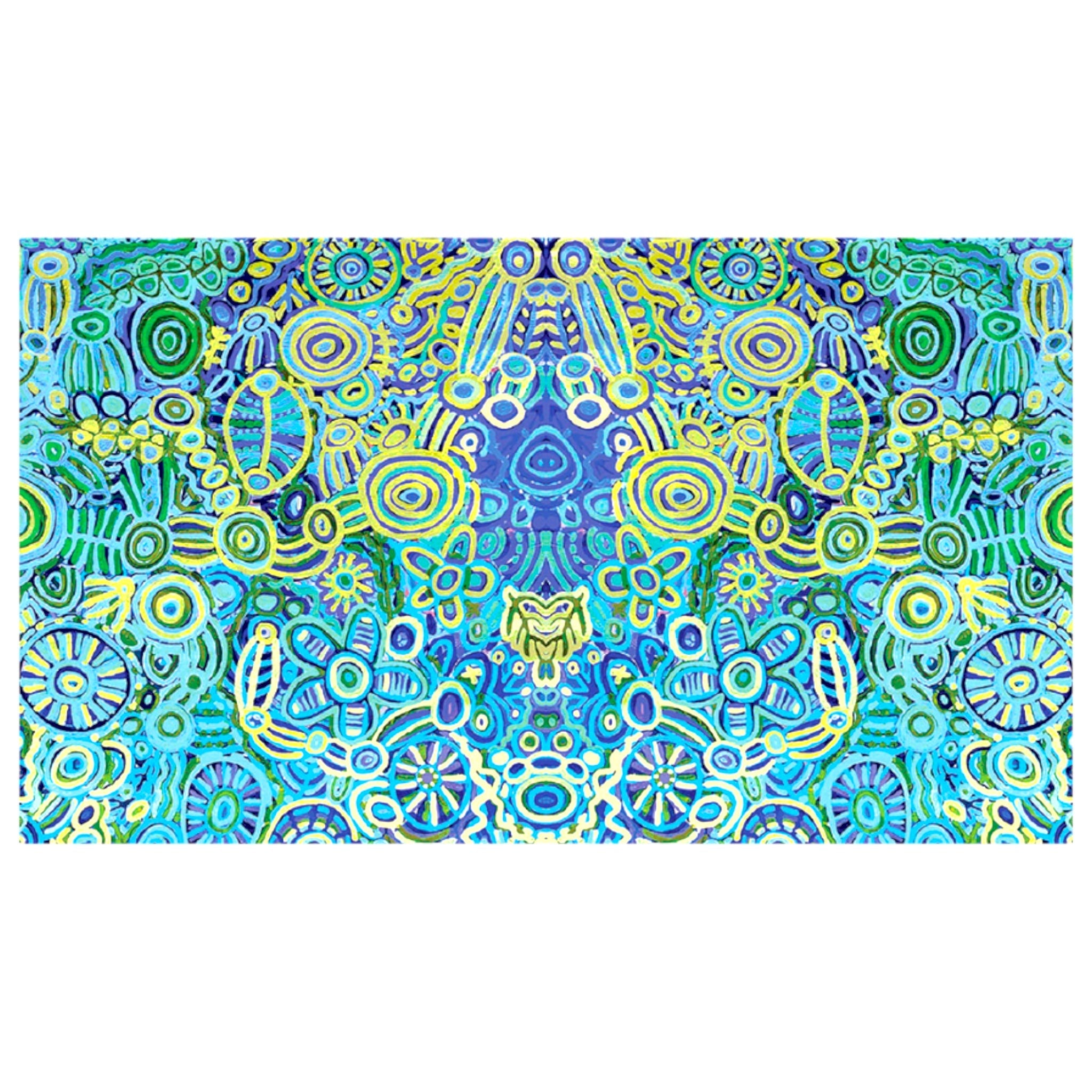Organic Cotton Sarongs 117cm x 200cm
Mary Napangardi Brown: This painting depicts linear pattern ‘body paint design’. The Aboriginal women paint their breasts and shoulders for ceremonies, which include song and dance used to tell their ancient stories. The concentric circles symbolise ceremonies or meeting place.
Cedric Varcoe (Pinks): In the Dreamtime our Ramindjeri RUWI didn’t have much freshwater soakages creeks and rivers so long time ago our ancestors seen that there were no fresh waterways around our country so one ancestor went out into the scrub and grab the tree and thrust it through the ground water immediately begun coming out the ground as he dragged the tree all the way to the ocean he created what is now the Hindmarsh River and inmin river the rivers still flows still today then our ancestors all gathered in the Hindmarsh valley they come from all over Ngarrindjeri RUWI as they got there everyone started performing for the big ceremony and begun to dance they’re dancing feet on the dry soil they’re dancing feet created water ponds through the valley created from their dancing feet as the water ponds were created to catch the water as it rained in the valley still today the ponds through the valley created for us to get fresh water to drink from are now used my farmers.
Cedric Varcoe (Blue/Greens): When Ngurunderi travelled through what is now Ngarrindjeri country he came down the Murray River in his canoe. At that time it was just a small stream. Ngurunderi was looking for his two wives who had run away from him and was following Pondi, the big Murray Cod who had created the twists and turns of the river when sweeping his huge tail from side to side. Ngurunderi was trying to spear Pondi all the way along the journey.Together they formed the Murray River, lakes and landforms and everything in Ngarrindjeri Country. Ngurunderi made the rain that feeds the river and the country. With the rain came the rainbow, which can be seen in this painting. Ngurunderi also made the Ngarrindjeri people, who live along and around the River Murray, lakes, the Coorong region and across to Cape Jervis and the southern regions of what is now Adelaide. Ngurunderi travelled with his family and they also played a part in the creation of Ngarrindjeri country. Ngurunderi taught everyone the lore, dance, song, how to hunt and live and everything they needed to survive in their country. When they reached Lake Alexandrina Nepele, Ngurunderi’s brother in law, helped spear and kill Pondi. Ngurunderi cut Pondi into many pieces, each piece creating a new species of fish that now populates the river system. Ngurunderi never did catch his wives who drowned when crossing to Kangaroo Island, which was still joined to the mainland at that time. At this point Ngurunderi joined the spirit world becoming a star in the Milky Way. In July 2015 Cedric was given a grant by Arts SA. for professional development and cultural research. With the support of Better World Arts, Cedric pursued an intensive program of studying archived information at the South Australian Museum. He spent time talking to Ngarrindjeri elders and researching his Ngarrindjeri heritage in some depth. During the same time period Cedric undertook some developmental workshops focused on his painting. These workshops provided life drawing, brush techniques and colour theory components, providing tools and knowledge for Cedric to include in the technical sides of his art. The results of these inputs into Cedric’s artistic and cultural development were immediately evident. Cedric continues to develop as an artist.
Made by Better World Arts.
Better World arts has been operating for over two decades. Their role models were Oxfam, Fred Hollows (the Fred Hollows Foundation) and Anita Roddick (The Body Shop).
Initially, They worked with traditional handicrafts. In 1996 they invited Aboriginal artists to join our projects and soon after decided to focus on the Aboriginal art side of the projects and left the normal handicrafts to others like Oxfam.
They work with traditional artisans from remote regions in Kashmir, Peru, West Bengal, Uttar Pradesh and Nepal (Tibetan refugees), who take the design from the Aboriginal artists from remote communities across Australia; from Arnhem Land to Central and the Western Desert regions, from rural locations and from cities, and create beautiful products at affordable prices. The traditional artists in Australian and other parts of the world both benefit and keep their old craft alive.






